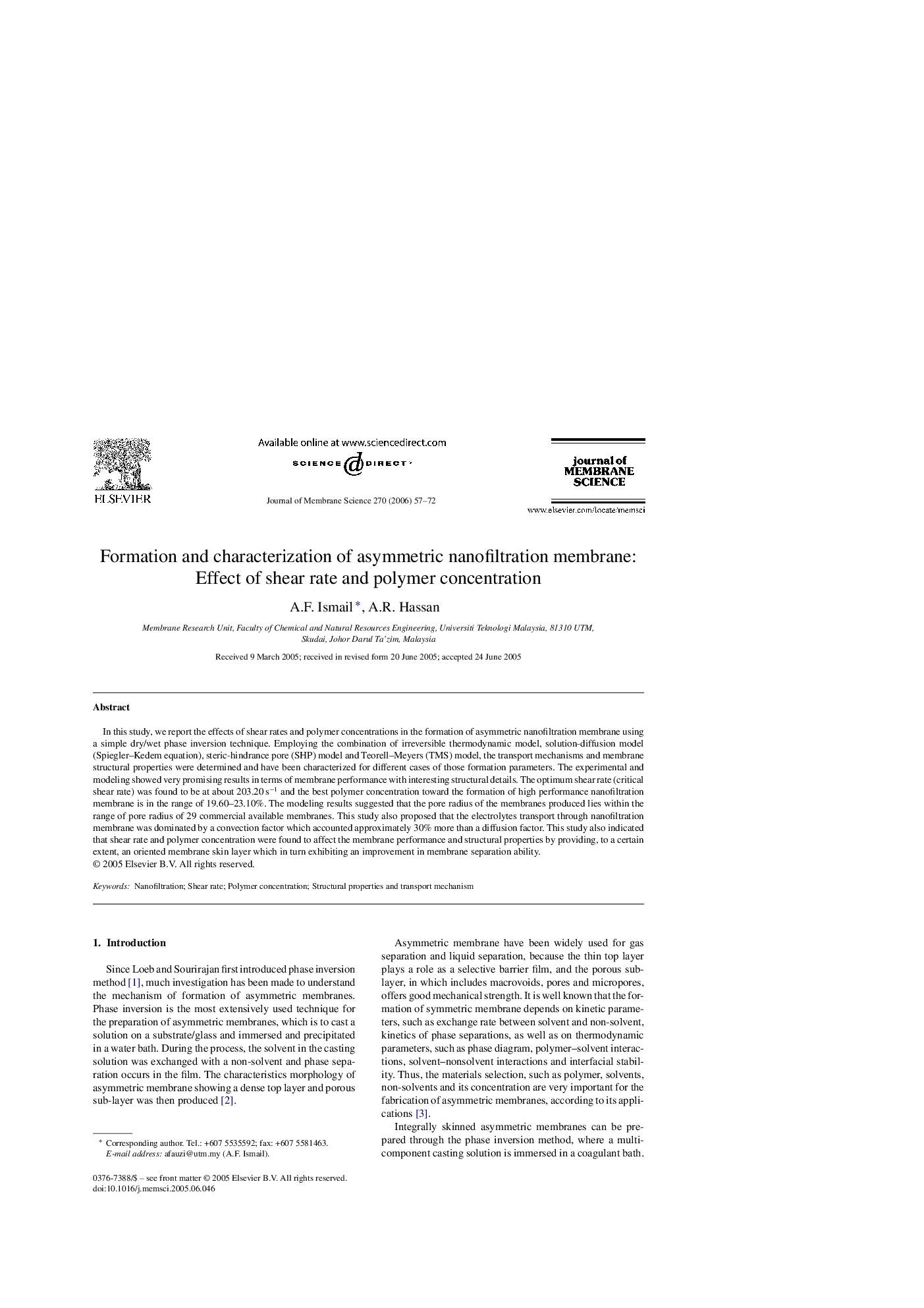| Article ID | Journal | Published Year | Pages | File Type |
|---|---|---|---|---|
| 639666 | Journal of Membrane Science | 2006 | 16 Pages |
In this study, we report the effects of shear rates and polymer concentrations in the formation of asymmetric nanofiltration membrane using a simple dry/wet phase inversion technique. Employing the combination of irreversible thermodynamic model, solution-diffusion model (Spiegler–Kedem equation), steric-hindrance pore (SHP) model and Teorell–Meyers (TMS) model, the transport mechanisms and membrane structural properties were determined and have been characterized for different cases of those formation parameters. The experimental and modeling showed very promising results in terms of membrane performance with interesting structural details. The optimum shear rate (critical shear rate) was found to be at about 203.20 s−1 and the best polymer concentration toward the formation of high performance nanofiltration membrane is in the range of 19.60–23.10%. The modeling results suggested that the pore radius of the membranes produced lies within the range of pore radius of 29 commercial available membranes. This study also proposed that the electrolytes transport through nanofiltration membrane was dominated by a convection factor which accounted approximately 30% more than a diffusion factor. This study also indicated that shear rate and polymer concentration were found to affect the membrane performance and structural properties by providing, to a certain extent, an oriented membrane skin layer which in turn exhibiting an improvement in membrane separation ability.
